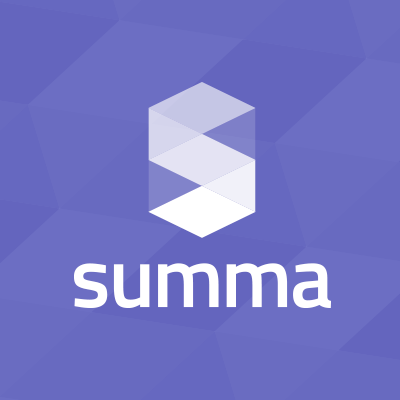The Salesforce Summer '16 release is upon us! As a Salesforce Gold Partner, we're helping our peers in the Salesforce community explore all that the release has to offer...
When Salesforce Lightning Experience made its grand debut, I was a Salesforce admin at a nonprofit. There was certainly a lot of hype surrounding the release, but I was skeptical and more than a bit overwhelmed. Like many nonprofit Salesforce admins, my time to spend working on Salesforce was limited. With NGO Connect and then Non-Profit Start Pack version 3 (NPSP 3) having just been released, how was a nonprofit supposed to deal with all the change? Each product had a whole list of cons, limitations on functionality, and possible complications from implementation—or so it seemed to me at the time. You could spend days sorting through all the release notes trying to create a plan for moving forward. It was paralyzing for many nonprofits—mine included. It was easier to just ignore the changes and keep moving forward with the status quo.
Now, a year and a half after NPSP 3 released and with the coming of the Summer ’16 Salesforce release, it is time for nonprofits to explore making the most of the new available tools. There are so many pros for making the move now that it's worth dedicating the time to the change. The combination of NPSP 3 and the new features available in Lightning Experience are great for the nonprofit community. Here are a few highlights:
Transforming dates into calendars for better insights
With this feature, you can plot out fundraising dates for your campaigns on a calendar, and then overlay it with a second calendar showing opportunity close dates. And voila! Now you can glean important insights, like how it takes so many days from the start of a campaign for donations to start flowing in for your mailings, but a different number of days for mass emails.
For healthcare nonprofits, new compliance-enhancing options
For nonprofits in the healthcare field, properly maintaining Protected Health Information (PHI) is critical. With the newest features introduced with Summer '16, you have options within Salesforce for managing your client information while maintaining your HIPAA compliance.
Email upgrades that ease your workload
Want to improve the open rate for your emails? You can now send emails from Salesforce through Gmail or Office 360. Previously, an email sent from you would arrive via a long alphanumeric email address, which would then be bcc'd to you so that it showed up in your inbox of choice. With this new feature, you can send an email from Salesforce and have it look like it's coming from you, and it'll show up in your sent email folder. Pretty awesome, right?
Okay, so there are plenty of cool features in this new release. But where do you start? Here's what we recommend.
Upgrade to NPSP 3
We understand that, depending upon how much data and customization are in your organization and what account model you are using, upgrading to NPSP 3 may be a daunting task. This is a great time to enlist the help of an experienced Salesforce consultant. Also remember that nonprofits have access to Sandboxes, meaning you can take time testing out the upgrade in a Sandbox.
Two big reasons to switch to NPSP 3 are...
Household Model: This is one of the best new features of NPSP 3 and came out with the original release. No longer are you forced to make the Salesforce B2B model work for you as a nonprofit when you are more client facing or work with a large number of volunteers.
Donation Management: This spring, Salesforce released a couple of changes that make donation management much easier. With corporate social responsibility becoming more engrained in society, the ability to easily track matching gifts is a major upgrade. When your favorite company sends a check to match their employees' donations, you can match that check up with the appropriate employees. Salesforce has also included partial soft credits, honor/memorial and in-kind gift tracking. All of these new features make it easier to ensure that the right people get a thank you note for their donations, which we all know is critical to building your donor pool. And it helps with the IRS, too. (Always a plus.)
Consider implementing Lightning Experience
Once you have NPSP 3 up and running, you should think about implementing Lightning Experience. This is another great opportunity to make use of the Sandbox to test out any apps you are using, apex code and customization that you have in your organization. It's important to test out these functionalities before transitioning your users to Lightning, so that you don’t have an 11th-hour critical application failure just as a donation campaign goes live.
Now that you're sure your donation processing app or volunteer management module won't have a critical failure, you can begin the process of implementing Lightning. Unlike with NPSP 3, you can move to Lightning in stages. After it has been enabled for your org, you can transition your users individually, or all at once. For some it might be best to start with a small group of power users who will become champions for Lightning after they have transitioned. For other organizations, it may be easier to move one department to Lightning at a time.
When you go the route of implementing with power users, your new champions can help take some of the workload off of you. They can answer questions for other users and provide support and encouragement to their co-workers. On the other hand, by implementing within a single department at a time, you have fewer business processes going live at one time. This helps control possible complications. Neither route is better—it really comes down to the size of your organization, how your users handle change and your workload.
If your workload won’t you give the change the attention you need, bring in a Salesforce consultant. A consultant can help you come up with a plan, assist in the implementation, help train users and provide ongoing support. These new functions have the potential to save your staff a lot of time and increase your knowledge about your donor pool and other business operations. While the cost of a consultant might make you wary of the idea, remember that in the long run, a consultant can actually save your organization money, time and resources while increasing your organization’s reach.
It's important not to rush into either change—sometimes when you're excited about new features, it's easy to overlook the possible pitfalls in implementation. But with a solid plan, you can enjoy the great new features of NPSP 3 and the Summer '16 Release Lightning Experience!
Learn what's new for Summer '16 without having to review 388 pages of release notes...
Our experts have the scoop on all the hottest updates in Summer '16. Read on or listen to our Summer '16 Webinar!



